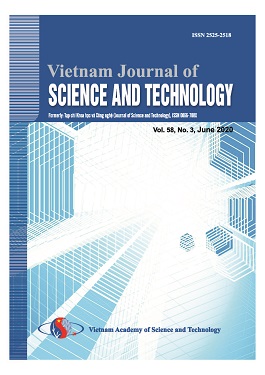Application of response surface methodology to optimize biodiesel production from esterification of palmitic acid in excess methanol
Author affiliations
DOI:
https://doi.org/10.15625/0866-708X/52/2/3128Abstract
The main purpose of this study was to find out optimal conditions for producing biodiesel via esterification of palmitic acid in excess methanol using solid acid catalyst, viz. Amberlite™ IR-120 (H) resin. A stepwise regression for Box-Behnken design was performed to optimize parameters of this process. A 93.94% of conversion efficiencies could be explained by an insignificant lack-of-fit response surface model (R2 = 0.9394; p = 0.259). Optimum conditions were found as follows: 8:1 in the molar feed ratio of methanol to palmitic acid, a reaction temperature as 61.0 °C, a reaction time of 11.73 h. The catalyst loadings and agitation speed were kept constant at 10 wt.% of palmitic acid and 600 rpm, respectively. Under these conditions, conversion efficiency of palmitic acid to palmitic acid methyl ester reaction is (97.60 ± 0.64)%, and it is nearly 0.19% difference between observed and predicted values. The solid catalyst can be reused at least five times after treating in a simple way.Downloads
Downloads
Published
How to Cite
Issue
Section
License

This work is licensed under a Creative Commons Attribution-ShareAlike 4.0 International License.
Vietnam Journal of Sciences and Technology (VJST) is an open access and peer-reviewed journal. All academic publications could be made free to read and downloaded for everyone. In addition, articles are published under term of the Creative Commons Attribution-ShareAlike 4.0 International (CC BY-SA) Licence which permits use, distribution and reproduction in any medium, provided the original work is properly cited & ShareAlike terms followed.
Copyright on any research article published in VJST is retained by the respective author(s), without restrictions. Authors grant VAST Journals System a license to publish the article and identify itself as the original publisher. Upon author(s) by giving permission to VJST either via VJST journal portal or other channel to publish their research work in VJST agrees to all the terms and conditions of https://creativecommons.org/licenses/by-sa/4.0/ License and terms & condition set by VJST.
Authors have the responsibility of to secure all necessary copyright permissions for the use of 3rd-party materials in their manuscript.







 Vietnam Journal of Science and Technology (VJST) is pleased to notice:
Vietnam Journal of Science and Technology (VJST) is pleased to notice: